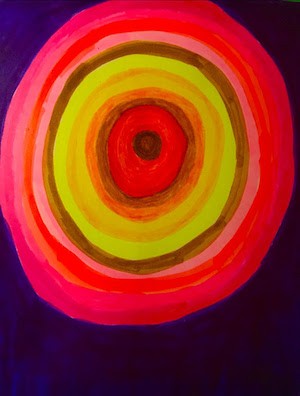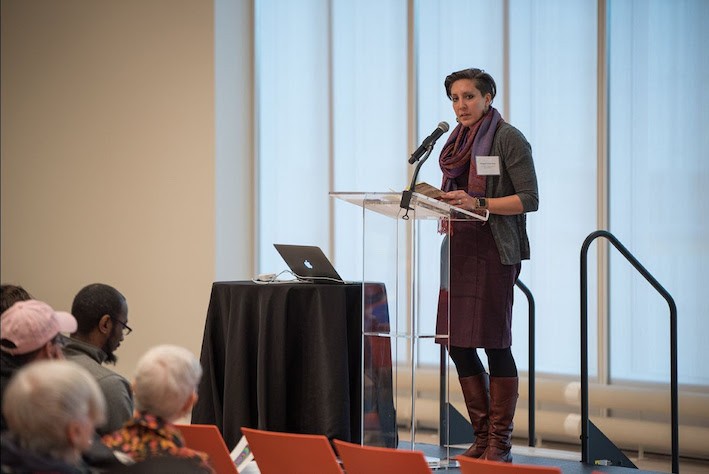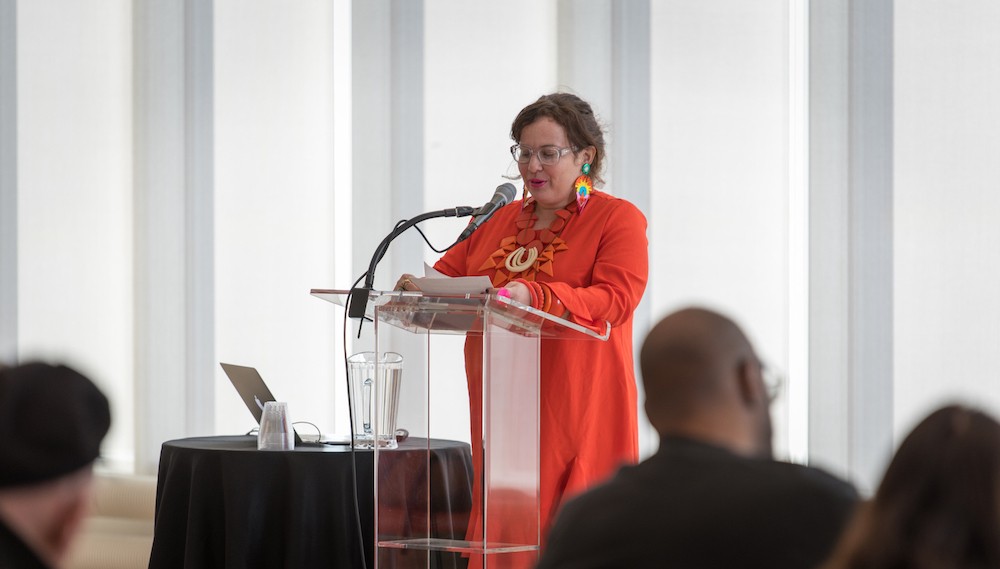Dorothea Lasky and Abigail Chabitnoy: What are you working on now?
Since 2018, Associate Professor of Writing Dorothea Lasky has invited a dazzling array of poets to the Lenfest Center for the Arts, including Ken Chen, CAConrad, Anaïs Duplan, Matthea Harvey, Douglas Kearney, Myung Mi Kim, Wayne Koestenbaum, Fred Moten, Cecilia Pavón, Celina Su, Cecilia Vicuña, and Abigail Chabitnoy. We recently spoke with Lasky and Chabitnoy, author of How to Dress a Fish.
School of the Arts: What are you working on now?
Abigail Chabitnoy: I'm currently at work on my second collection. Operating on the premise that we tell stories to survive, I am revisiting those stories we tell—of families and relationships, origins, floods, beginnings and re-beginnings, nature, history, and language—in the context of violence against women, against the landscape, and against indigenous people.

Dorothea Lasky: These days I mostly have been working on an essay book, with essays on memory, anger, anxiety, Satanism, veganism, among many other things. I am also working on a poetry book, which will heavily deal with a possible climate apocalypse in the near future.
I recently had parts of my dissertation research on small 'c' creativity published in the journal Thinking Skills and Creativity, and I am hoping that there will be more opportunities to do educational research in the future. My heart is in that work, because I have always believed that a re-imagining of our school systems will lead to a world where everyone is valued for their own important creative leaps and contributions to society.
I am also so excited that the proceedings from the symposium More Than A Manifesto: The Poet's Essay, held at the Lenfest Center in 2018, are going to be in a book next year through Essay Press. And so, lately, I have been thinking a lot about how to make that the best book possible.
Watch segments from More Than a Manifesto: The Poet's Essay
The Essay, The Manifesto, and the Poetic Imagination with Tracie Morris, Anais Duplan, and Raquel Salas Rivera
Logic, Aesthetics, Meaning and Memory in a Poem-Essay with Ken Chen, Ariel Goldberg, Wayne Koestenbaum

School of the Arts: What are you thinking about now?
Dorothea Lasky: Right now I have been thinking a lot about the connectivity of humans and our relationship to each other. Currently, we are in a moment as a country where we are acknowledging once again the horrific systemic racism that permeates every facet of our society. It has saddened me beyond measure that this moment has arrived in response to the brutal and unthinkable murders of beautiful people like Ahmaud Arbery, George Floyd, Breonna Taylor, and Rayshard Brooks. I hope that we can sustain the momentum of the movements happening throughout the country and work towards the crucial social transformations long overdue to enable everyone to feel safe and empowered.
The isolation of the quarantines has made me feel even more in touch with what I feel is most important about life. For me, that means making sure that everyone has the resources they need to thrive, that the planet is healthy, and that everyone feels empowered to be creative. I think we tend to think of creativity as a sort of add-on to life, but these days, I am reminded again and again how creativity is truly the life force itself. It has its own logic, its own integrity, and we can learn a lot from it still.
Abigail Chabitnoy: I suppose I often think about the same things, though of course my perspective shifts with the context. I'm thinking about violence in context of the border crisis and policies of family separation; of Missing and Murdered Indigenous Women; of climate change and the increasing weather extremes forecast for the future; of rising sea levels and their impact on social justice, how communities will be relocated, where, at whose expense and will. And of course it's impossible not to think of the current pandemic, our government's response, the strain on the entire system and various other shortcomings this crisis is highlighting.
I am currently in a residency in the middle of the woods. Because I can’t participate in large city demonstrations, I’m thinking of other ways to meaningfully work toward change, ways of educating white friends and family who refuse to consider the perspective of people of color in this country. While I don't necessarily write about all these things directly, they bear on how I approach the act of writing poems, the practice itself, what poems can and can't offer in such times, what the language of my ancestors, and others, who have for hundreds of years lived close to the land and sea can offer and how to engage with such language reciprocally, respectfully, rather than exploitatively; how such a poetics can illuminate some manner of path forward, some kind of hope or vision of how to survive ourselves. Though my current lens is focused primarily on violence against women, specifically indigenous women, these patterns are connected. The Western tendency to view the landscape as property, to view indigenous people as less than human, indigenous women as objects, black people as inherently criminally inclined—are rooted in the same tradition of manifest destiny that has led us to the brink of ecological destruction.
